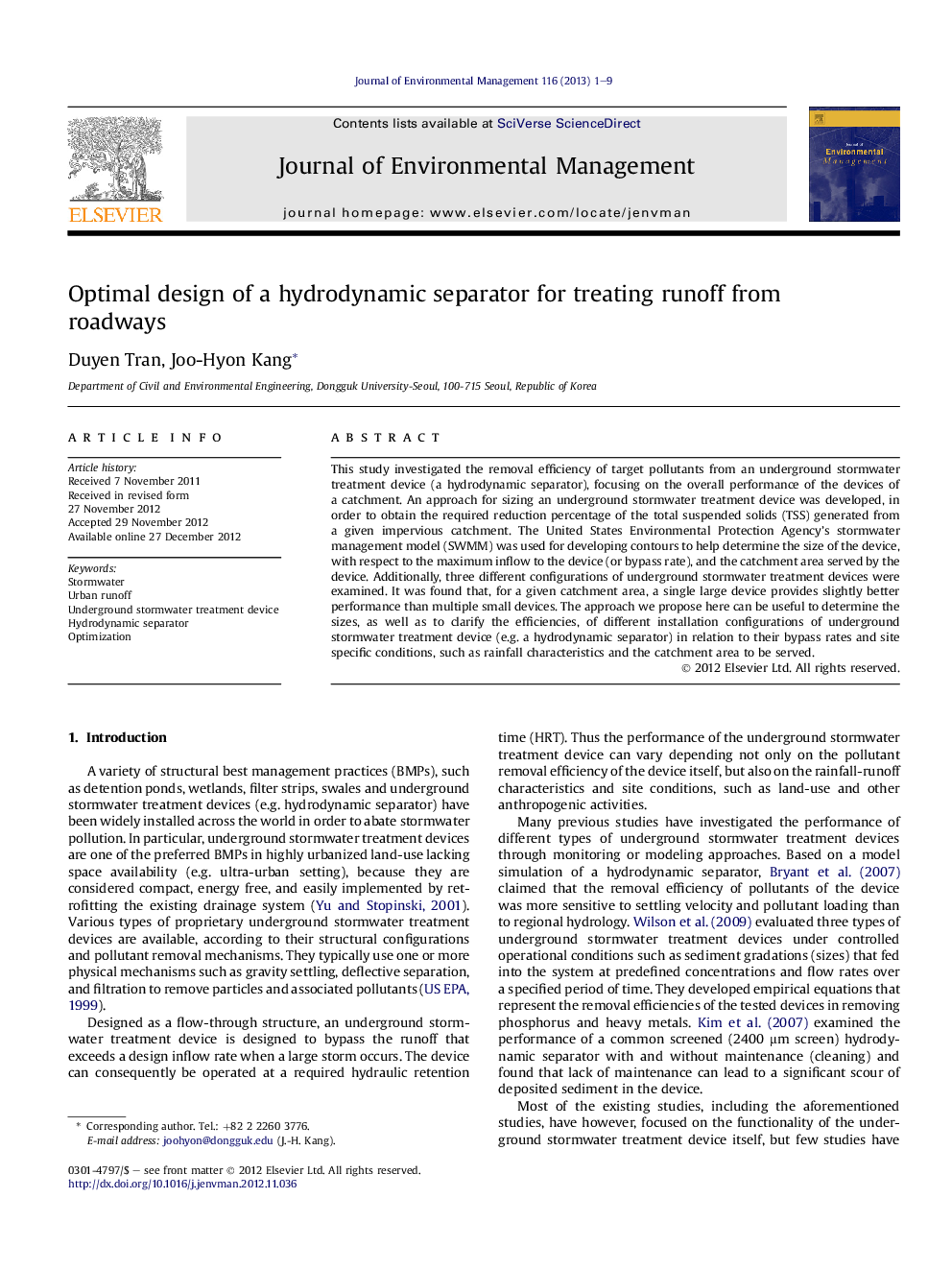| Article ID | Journal | Published Year | Pages | File Type |
|---|---|---|---|---|
| 1056375 | Journal of Environmental Management | 2013 | 9 Pages |
This study investigated the removal efficiency of target pollutants from an underground stormwater treatment device (a hydrodynamic separator), focusing on the overall performance of the devices of a catchment. An approach for sizing an underground stormwater treatment device was developed, in order to obtain the required reduction percentage of the total suspended solids (TSS) generated from a given impervious catchment. The United States Environmental Protection Agency's stormwater management model (SWMM) was used for developing contours to help determine the size of the device, with respect to the maximum inflow to the device (or bypass rate), and the catchment area served by the device. Additionally, three different configurations of underground stormwater treatment devices were examined. It was found that, for a given catchment area, a single large device provides slightly better performance than multiple small devices. The approach we propose here can be useful to determine the sizes, as well as to clarify the efficiencies, of different installation configurations of underground stormwater treatment device (e.g. a hydrodynamic separator) in relation to their bypass rates and site specific conditions, such as rainfall characteristics and the catchment area to be served.
► We propose a methodology to determine the size, number, and configuration of the underground stormwater treatment device. ► The Box complex optimization algorithm is implemented in MATLAB, coupled with the USEPA SWMM for the model calibration. ► A single large device provides not only a better performance, but also a lower cost than multiple small devices, for a given catchment area. ► The same approach can be applied to other types of structural best management practices.
